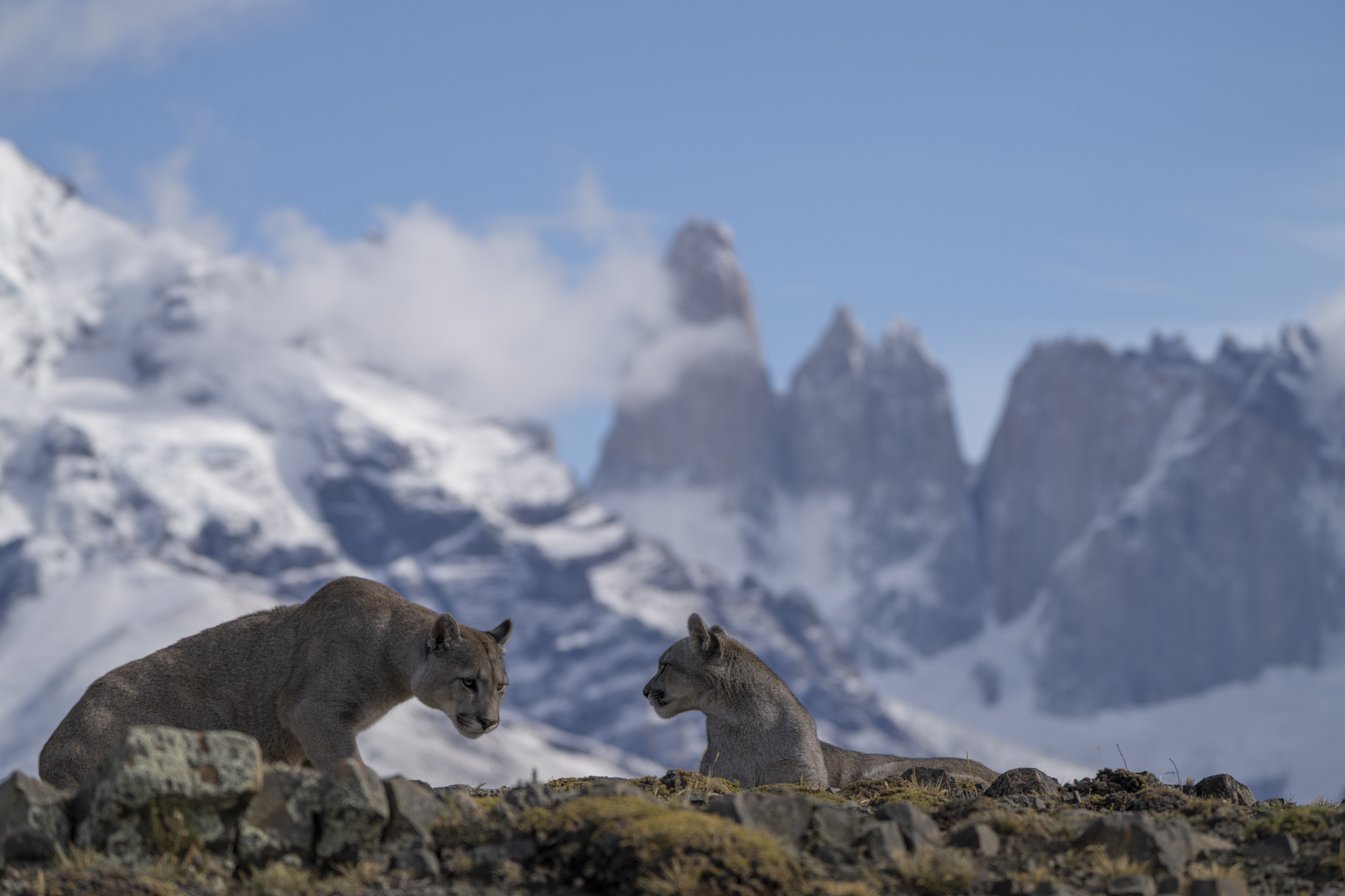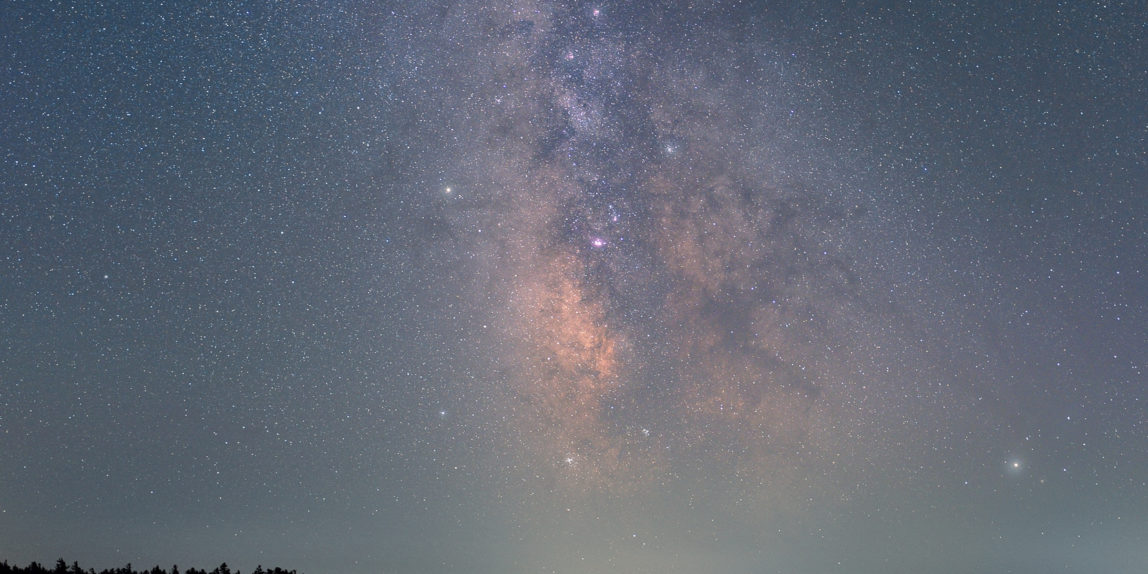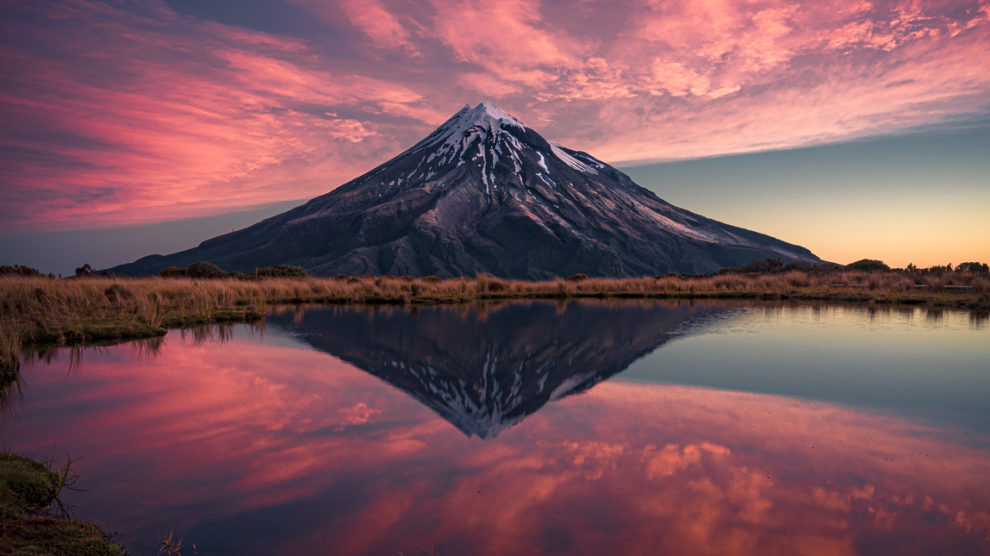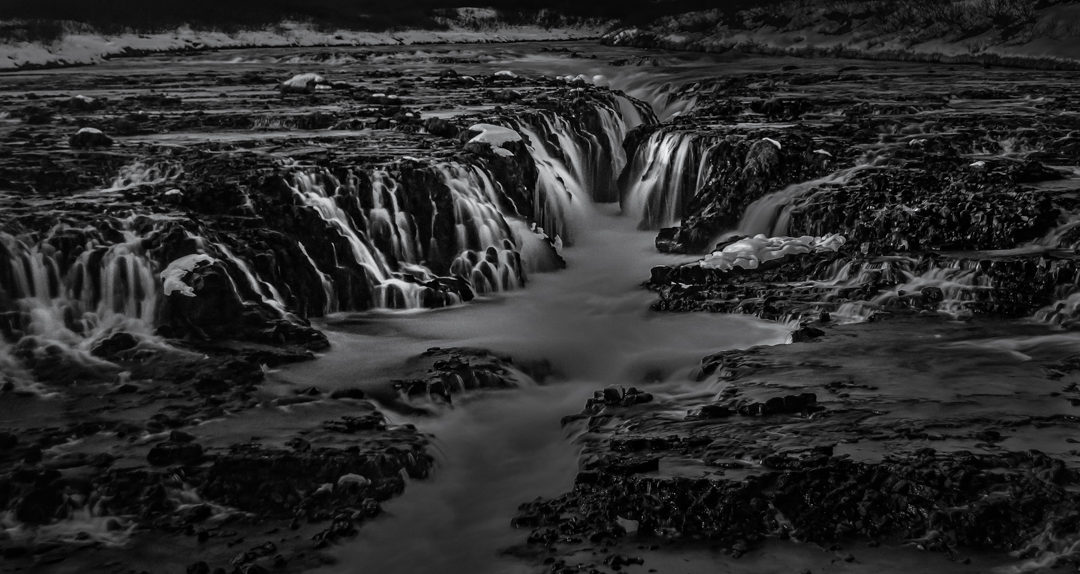
In the midst of a winter wonderland, I found myself standing ankle-deep in a blanket of freshly fallen snow, staring down an adult female puma. Partially concealed within the surrounding bushes, she was backed by the imposing granite tower of Torres Del Paine, while her unflinching gaze met mine through the lens of my camera. But to truly appreciate the gravity of this moment, let me provide some context of how I found myself in that position.
Patagonia is a landscape photographer’s dream and has been on the top of my trip list for a while. I finally decided it was time to make the trip a reality and hopped a plane…well five planes…and made my way down to this remote area. Patagonia makes up a broad region of the Andes Mountains, within Chile and Argentina, near the southern tip of South America. I spent time in both countries, with the first part of my trip being on the Chilean side in the National Park: Torres del Paine (Towers of Blue). The park includes the iconic mountains of Los Cuernos (The Horns), Paine Grande, and the Torres, which are the park’s namesake.


The incredible landscape attracts hikers from around the world that wish to complete the famous W trek or the longer, more adventurous O trek. These treks require 4-10 days of hiking around the park on a continuous trail, with stops at designated campsites along the way. While I am an avid hiker, I simply did not budget the time to do these treks (on this trip) and instead, spent my time exploring other parts of the park.
When researching the trip, I was excited by the potential wildlife I could encounter: the lama-like guanaco, the iconic Andean condor, and the Andean fox. But nothing excited me more than the chance to see a puma! Back in 1980, the Chilean government declared the puma a protected species. This act has rescued the puma population from near extinction, and the area in and around Torres Del Paine is home to the largest concentration of this species on the planet. Multiple documentaries have been filmed in this exact area from: PBS “Pumas: Legends of the Ice Mountains”, National Geographic “Pumas at the End of the World”, Apple TV’s “Earth at Night in Color” and most recently, the BBC series, “Dynasties II”.
While the Pumas of South America and the Mountain Lions/Cougars or North America are both subspecies of Puma concolor, they exhibit distinct behavioral differences influenced by various factors, including the recent protections enacted for the puma in Chile.
The North American mountain lion primarily inhabits forested areas and is known for its solitary and elusive behavior. This cat tends to avoid human interactions and is largely active during the night. In contrast, the South American puma, commonly found in open habitats such as grasslands and shrublands, is more active during the day and can be more tolerant of human presence. This may be attributed in part to the increased protection of pumas in Chile
Another factor contributing to the differences in behavior between the two subspecies is the availability of prey. The North American mountain lion has a varied diet, consuming mainly deer, but also preying on smaller mammals such as rabbits and rodents. The South American puma, on the other hand, relies heavily on guanacos as its primary prey which are abundant across its territory. This specialization may contribute to the puma’s more opportunistic and bolder behavior in the face of human activities, as it is more reliant on hunting in open areas where human activities are more prevalent.
With only a handful of days at the park, I decided to increase my chances of seeing one of these cats. I contacted a friend who referred me to a local tracker named Victor. After getting in contact with him, we arranged to spend a couple days tracking within a private estancia (ranch) that borders the national park. Puma and ranches are typically at odds but after the laws protecting puma were passed, rather than be at war with the puma like many ranches across the border in Argentina, they chose to give the puma free reign. This is no small ranch either. At 70,000 hectares it is now the home to at least 3 separate families of puma.
Victor cautioned me that two days was not a lot of time to find the cats and to not get my hopes up. Unfortunately, that was all the time I could allocate within my tight schedule, so I assured him that the experience of tracking alone would be rewarding enough for me. Little did I know that those two days would bring me close to seven different puma!
Day 1-Tracking Puma through snow
I had been camping in a tent for the previous 3 days at the Lake Pehoe Campground on the end of the park opposite from the ranch. The morning of our first day tracking, I woke up at 5:30 am to find it had rained and that rain was now a frozen layer of ice on my car since the temperature also dropped. I defrosted it while I made some coffee, and headed out to meet Victor at the entrance to the park where would pick me up in his off-roading vehicle. Not far from my campsite, the road began to climb in elevation and I hit snow! This was a surprise to me, since it was still dark and there had been no snow where I had camped. The sight of it caused both concern and excitement. I had no idea how much more snow was waiting ahead, but the thought of tracking puma in the snow was thrilling to think about. Luckily, the snow remained a minor 1-2 inches as I drove and gained elevation. Victor was there when I arrived, so I grabbed my gear, loaded it into his van, and we headed out of the park and into the ranch.




We spent about an hour driving through the ranch as the sun was rising and slowly lighting the areas around us. Once there was enough light to see at a distance, Victor pulled over to have a look around. He took out a pair of binoculars and scanned the distant hills. This ranch was massive. It was one rolling hill after another, peppered with rocks and shrubs all among the fresh snow, which made it a difficult scene to scan. I couldn’t see anything with my naked eye, but I got out and stood side by side with him to observe the process and the magnificent landscape we were immersed in.
Far in the distance we could see a guanaco standing on a hill. This was a sentinel, whose job it was to watch out for the herd and signal it if it saw any approaching pumas. This guanaco siren was a key part of tracking, so we were always listening for the sound. As we stood there, Victor spotted a puma heading toward the guanaco on the hill. It was a couple kilometers away, so we rushed back to the van and drove off in pursuit. We headed toward the easy to spot guanaco, and we tried to find the puma again once we were closer, but we had lost sight of it.


We drove around and around until we came across a set of tracks in the snow. We followed them for a while, but they appeared to head past the herd of guanaco. It was clear that this puma had decided not to pursue this herd this morning and had moved on. At this point, we were near the end of our allotted time for the morning session on the ranch. Part of the ranch’s duties as stewards for these puma is making sure that they get time to themselves. For this reason, they limit the time visitors can spend on the ranch each day. Knowing this, we started to head back toward the exit of the ranch and I was grateful for the experience of the chase.
As we drove on, Victor stopped the van and grabbed his binoculars again. He started to get excited and said he had found another puma. No wait, two puma, No… three! Three puma were positioned along a ridgeline roughly a kilometer away. I still could not see them with my eyes, but Victor told me to grab my camera and we were off on foot from there. We moved with haste at first, but as we got closer we slowed down to a walk, moving in a zigzag pattern to avoid making them feel threatened. As we worked our way closer and closer, we began to ascend the hill that they were positioned on.



At this point, one of them had disappeared over the hill, and the other two had grouped together and were surveying the area. They observed us approaching and then descended down the backside of the hill. We followed slowly, trailing behind at a significant distance to give them space. As we crested the hill, we saw them walking together observing a herd of guanaco at the bottom of the hill. As we followed, they split. We followed one to a spot where she laid down among a cluster of bushes in the perfect position to observe the herd below. It was at this point that we were close enough to identify the cat by name. This was Sol. Trackers in the area have become familiar with the features, territories and temperaments of each puma, and unsurprisingly, that means each puma has a name.





Sol was calm and relaxed. The morning light had risen high in the sky, and this was no longer the opportunity for her to hunt, but to relax and soak in the warm light as she lay in the fresh snow. We spent 15-20 minutes working around her, enjoying her presence, observing, and documenting. It’s an experience where you are extremely excited to be in the moment, but at the same time remaining calm and matching the temperament of the puma as to not agitate her. It was a conflicting experience to say the least. In my research and guidance from my tracker, I knew that it was important to follow some basic rules during these interactions in order to keep both myself and the animal safe. Keeping eye contact, not turning your back, and never running are the actions that keep you from looking like prey. By following these rules and keeping a respectable distance, we got to enjoy each others company without any sense of fear.




The sun was now high and it was time to leave Sol and her family to rest up and have time to themselves, so we left the ranch satisfied with an incredible first attempt!
It was around 3:30 PM that we started out for our evening session at the opposite side of the ranch. By now, all of the morning snow had completely vanished. We spotted a pair of guanaco down in a valley and we watched them for a while, looking for any signs of movement or alarm. We were surrounded by thick bushes that could easily have been hiding a puma, considering how the ground was littered with evidence that pumas had definitely been here at some point. After a while, with no luck, we decided to move on and try elsewhere.


We got back in the van and continued on, passing through a large herd of guanaco as we made our way higher into the mountains. We got out of the van and began to hike around constantly checking the distance for any signs of movement. Hours went by with no sign of a puma. I was satisfied with the amazing success of the morning, and as we approached the end of our time with no success in the afternoon, I was still happy with our findings that day.
We checked from one final hilltop and as luck would have it, Victor spotted a puma on the plateau below. I could not see it, and I certainly couldn’t get a good picture from so far away, but Victor radioed the sighting to his fellow trackers and spotters in the area. From where we were standing there was no direct route down to the plateau. We would need to drive back the way we came and take the long way around. However, the puma’s location could be lost if we left. A spotter came to relieve us from our vantage point and keep an eye on this cat while we hurried to get down to the cat. When we arrived at the base of the plateau, a group being led by another tracker was waiting for us, so we climbed the plateau and scanned the area together. Victor once again was able to locate the puma, laying well-hidden along a wire fence, nearly invisible among a thicket of bushes. I think Victor must have bionic eyes, his ability to find these cats was superhuman!
I captured a few images of her within the bush, but she quickly decided to leave. Victor explained that he could now identify her as Egyptia, a name given to her based on her facial features. He told me that she was a very rare cat to find since she is very shy. We left her alone and watched her walk away along the plateau, and up the ridge to the mountain top where we had first spotted her. She would occasionally stop and look back at us as she continued on her way.




We were about to pack it in for the night, but another tracker mentioned over the radio that the young female down the road had come out of hiding. When juvenile puma reach the age of two, their mothers instinctively decide that it is time for them to venture out on their own, and will separate from them. This young puma had been left by her mother 2 days prior at a spot near the road into the national park. The youngster, not understanding what was happening, stayed in that spot the entire time, confused by her mother’s abandonment. She had been laying hidden in bushes all day, but now she was out and active.
When we arrived, there was a small line of cars stopped on the side of the road with people watching her as she yelled out for her mother. It was not the intimate experience we had with the other cats that day, but it was an emotional one. Her name was Armaga, the same as a nearby lake. As I sat observing her, I began to notice more and more shockingly familiar behavior emerge. At first, she sat in a bush, looking around and occasionally yelling out. Then, she decided it was playtime, and took a plastic bottle she had nearby and began swatting it and jumping around. After a few moments of playing with the bottle, she stopped and ran up a small hill and attempted to cry out for her mother’s return. While sitting on the hill, she saw her tail and chased herself in a circle until she caught it. This incredible interaction made these amazing animals even more relatable. After all, they are big cats!




It was at this point we finally closed our first day of tracking, and what a day it had been! Five pumas in a single day was unheard of, and to top it off, we had gotten snow! We left for my campsite to get some food and rest before our final day of tracking.
Day 2- Closure
The next day was cold, but not enough for new snow, and we set out again before sunrise to find a good position to observe. We started searching around a massive lake, and not finding any activity or guanaco, we ventured further into the ranch. Another tracker radioed that a puma had been spotted inside the park, yet near the edge of the ranch. One of the puma’s territories overlapped the national park and ranch, with the majority of the territory in the park. We drove toward the edge of the ranch hoping that it might decide to hunt on the ranch side of his territory. In the park we would be restricted to the areas near the road, and it wouldn’t make for the best experience. We got the call that the puma was headed deeper into the park, but we were still hopeful of finding another in the location we had moved to, so we stuck around.
We spent hours hiking and driving around the ranch. One of the locations we stopped at had a large rock formation overlooking a small lake. We climbed to the top of the rocks to get a view and found two rare birds. They were White Throated Curacao. I spent some time observing and photographing them as Victor continued to search for pumas.



Eventually, the two birds flew away and we moved on to another nearby hilltop to continue our search. We were met by a guanaco who was a bit startled when it climbed the hill and found us standing there. It turns out we both thought this was a great spot to be on the lookout for puma. This sentinel guanaco, having assessed that we were trustworthy, took up a post quite close to us and remained very alert. We thought this was a good sign since when a guanaco sees a puma they remain quite alert for a while afterwards. However, time passed without any other signs of puma in the area and we decided to move on.




We were well past our morning session time but decided to combine the morning and afternoon times into a single session that would extend through into the early afternoon. It was a good thing that we did. As we continued to drive through the ranch, Victor spotted what appeared to be a puma on a hilltop. The valley below had a herd of guanaco and they were sirening that they too had seen the puma on the hill. We slowly worked our way up the hill, and when we got closer, we discovered it wasn’t a puma, it was three! These three pumas were hanging out on top of a hill, surveying the valleys on multiple sides, all which seemed to have herds of guanaco. They watched us approach, assessed that we were not a threat or lunch, and went back to their business observing and basking in the sun. It was not prime hunting time for them, but they were keeping an eye out for any opportunity that might present itself.




When we got close enough, Victor was able to identify the cats. It was a mother and her two cubs. The mothers name was Petaca, who happens to be the star of an episode of the “Earth at Night in Color”. She was accompanied by her son Paine and to our surprise and delight, her daughter Armaga! Armaga was the puma we had been watching by the road the previous night who was calling out for her mother. I guess Petaca decided Armaga could use some more time together after all. We spent almost an hour with the three of them, watching them go from sleepy and dozing, to high alert when they thought there was an opportunity for a hunt. Petaca rose to her feet and began to stalk down the hill but a guanaco siren dashed her hopes and she returned to her cubs who were making no effort to help out.




As we worked our way around the hill to get a different view and a better backdrop, Paine walked over to his sister, nuzzled her a bit and then laid down right beside her. The two made quite the photogenic pair in front of the iconic granite towers. It was the perfect conclusion to my tracking experience in Torres del Paine. After ending the first day with the heartbreaking sights and sounds of Armaga trying to cope with being alone, to find her reunited with her family, left me feeling complete.




This was an incredible opportunity to observe and document these amazing animals. I did not feel threatened during this entire experience but please remember that wildlife is to be respected. Keep your distance, do your research on behaviors, learn how the animals communicate emotions, and respect those communications. Neither your safety nor the animals safety should ever be put at risk for the sake of a picture.
What Chile has done to provide an atmosphere where these animals can thrive without fear has what made these types of interactions possible. As Chile continues to lead the way in protecting this majestic animal, it will be interesting to see how this may further impact the behavior and survival of the South American puma.









